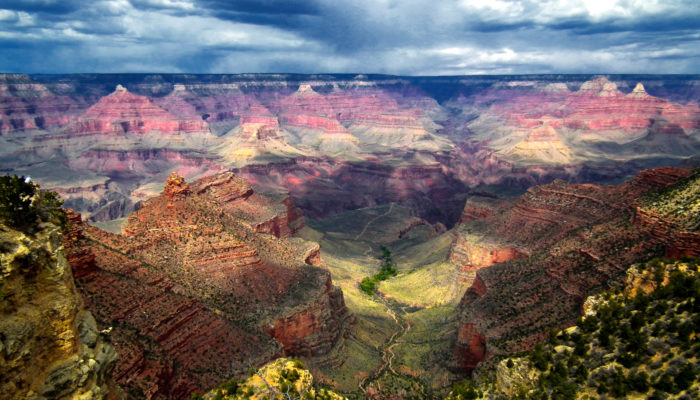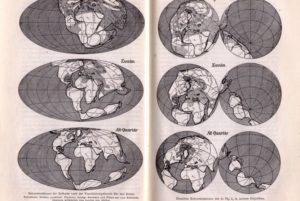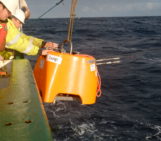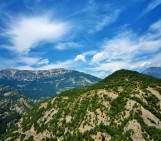
German scientist Alfred Wegener spent most of his life defending a shocking theory: that all the world’s continents were once part of the same land mass before they drifted away. For many years after he passed, his theory continued to be shunned, ridiculed, and labelled as pseudoscience. And then, several decades later, geologists began to find more and more proof to support his continental drift theory, proof that Wegener sadly never lived to see.
This week marks 140 years since Wegener’s birthday on 1 November 1880. In his brief life of fifty years, he was recognized as a climatologist, geologist, geophysicist, meteorologist, and polar researcher. The European Geosciences Union recognizes his contributions to the geosciences with the Alfred Wegener Medal & Honorary Membership: a prestigious award bestowed by the Union to scientists who have achieved exceptional international standing in atmospheric, hydrological or ocean sciences, for their merit and their scientific achievements.
So how exactly did Wegener come about his theory of continental drift? Turns out, he was willing to see what others couldn’t.
An atlas that sparked a wild idea
When spending Christmas with his friend in 1910, Wegener browsed through his friend’s new atlas. It was then that he asked a question that set his life work in motion:
“Doesn’t the east coast of South America exactly match the west coast of Africa?”
His observation of the interconnectedness between continents didn’t just end there. In his university library one day, Wegener browsed through a scientific paper that listed fossils of plants and animals on opposite sides of the Atlantic Ocean. He noticed striking similarities between the types of rock and fossils on both continents, almost as if these forms were once part of the same land mass. Modern science calls this ancient supercontinent Pangaea, and acknowledges that it did, in fact, exist before it broke up about 200 million years ago.
“A conviction of the fundamental soundness of the idea took root in my mind,” Wegener wrote in his notes, and presented these ideas for the first time in 1912 at a meeting of the German Geological Society in Frankfurt.

Reconstruction of the world map according to the continental drift theory (from Wegener’s book “Die Entstehung der Kontinente und Ozeane”) (Credit: C. Pichler)
Surviving skepticism and criticism
As Wegener dug deep to prove his hypothesis, the scientific community reacted less than favourably to his idea. Wegener tried to attribute the continental drift to either the centrifugal force of the Earth’s rotation or some astronomical precession. But his theory went against the prevailing hypothesis among geologists at the time: that land bridges had once connected the continents and were now buried under the ocean.
Some of the harshest criticism he received include:
“Wegener’s hypothesis… is of the footloose type, in that it takes considerable liberty with our globe, and is less bound by restrictions or tied down by ugly, awkward facts than most of its rival theories.” – Rollin T. Chamberlin, The University of Chicago
“Thank you for blowing this theory to bits, and thanks to Professor Wegener for offering himself for the explosion.” – Audience member to a speaker at a Royal Geographical Society meeting
“(This is) an example of Germanic pseudo-science, where Wegener has toyed with the evidence to spin himself into a state of auto-intoxication.” – An unnamed American palaeontologist
For decades afterward, older geologists warned newcomers that any hint of an interest in continental drift would surely doom their careers.
The evidence: then and now
But Wegener was not one to be deterred. The Alfred Wegener Institute describes his relentless efforts – despite heavy criticism from his peers – to gather evidence in various fields: first in geophysics, then in geology and palaeontology.
His focus was clear: to simply assert his findings again, even more strongly with proof.”
Together with his colleague Koch, he carried out highly precise position measurements on the northeast coast of Greenland and compared them with measurements of earlier expeditions. They attempted to show tangible proof of drifting between Europe and Greenland, though their initial values were at least one or two orders of magnitude too high.
Wegener’s initial values suggested an annual drift of about 30 metres, which shrunk very quickly to a figure of three metres. And today, the universally accepted values are three centimetres at most! Amongst all of Wegener’s evidence, his work is said to have foreshadowed the idea of plate tectonics, which forms the bedrock of modern geology today. He also called attention to the idea of using fossil evidence to support his hypothesis, the many examples of which can now be found here.
It’s a pity that Wegener could not live to see his life work not only be accepted but also used as the basis for global geological study. But his life efforts leave us with some valuable lessons: his astronomy background did not deter him from dipping his toes into other disciplines like biology, botany, and geology; and he persisted in his quest to prove his hypothesis, even in the face of backlash and criticism. Science has significantly built on his Wegener’s continental drift theory since then, but the examples he set as a scientist remain inspirational for generations to come.



Harrow & Hillingdon Geological Society
Can anyone explain to me what forces are driving the continents apart? Wegener suggested the centrifugal force of the Earth’s rotation, but the Hess model of convection currents persists as the accepted wisdom still taught today.
For a recent analysis of rotational forces see Maurer: https://youtu.be/UW1-gQDftzo Please leave comments if you have evidence that he is wrong. He has been shunned a bit like Wegener for the past 20 years.
Noel Waechter
Good article, Gillian! I am old enough that plate tectonics was not phrase I encountered in my undergraduate geologic studies at University of Montana. Continental drift was the term used then, and mantle upwelling was thought to be the driving force. Starting grad school at University of Texas in 1967, plate tectonics was much the topic of discussion. I still remember a visiting professor gave a guest lecture at UT calling plate tectonics bunk. Don’t think he got much traction with our grad students!